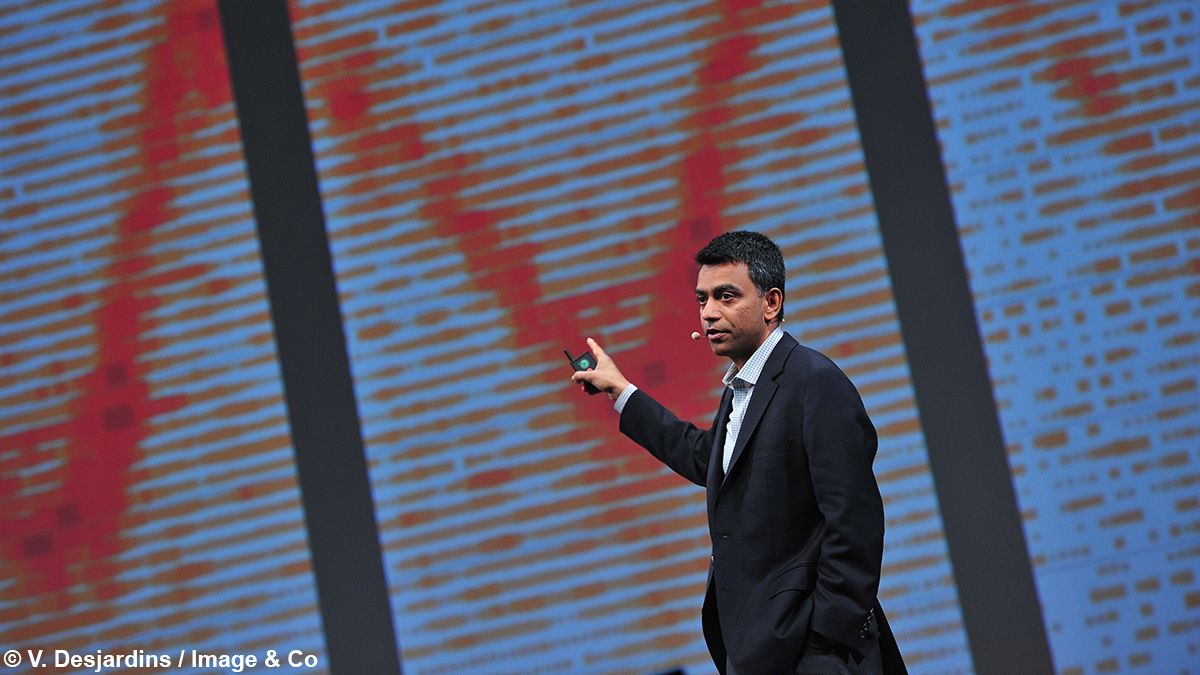Twitter and television are intertwined more than ever before, and both are benefiting from this partnership. This is what Twitter’s chief media scientist Deb Roy told a packed auditorium on Tuesday in a keynote speech at MIPTV. “Twitter makes television better: it is in fact a force multiplier that can enhance the impact and possibilities of television”.
Deb Roy started by comparing Twitter to “a synchronized social soundtrack”. Meaning the second screen people use to tweet during a television show does not necessarily result in the first screen being abandoned.
Twitter stakes claim as TV's ‘synchronised social soundtrack’ http://t.co/WNZwV0su7T via @guardian@dkroy#MIPTVpic.twitter.com/TyJPUKwUOh
— Stuart Dredge (@stuartdredge) April 9, 2014
Using dramatic data visualizations that made an impression on the audience, Roy showed how people tend to tweet and read tweets in real-time while a programme is aired on TV. He gave the example of the Oscars 2014 ceremony: “5 million people sent 19 million tweets that were received by 37 million unique people”. The number of tweet impressions rises to an impressive 3 billion during the following 48 hours.
The feedback loop of Tweets visualized in the #MIPTV presentation of @dkroy of Twitter https://t.co/Vm5NM3lvjO
— Geert Faber (@geertfaber) April 8, 2014
Roy explained that when people chat online during a show it can draw new viewers to the programme. If the anchor tweets on air, or if tweets are displayed live, the effect can be enhanced, “trigger[ing] new cascades of conversation”. Twitter works with the help of research firms like Nielsen to prove these observations and to convince broadcasters to collaborate with them.
Television networks and producers are not the only ones on Twitter’s radar. Roy also showed how advertisers have a lot to gain by participating in this real-time conversation. Using another Nielsen’s study, he showed how ads placed around social TV shows drove higher return-in-investment for the advertisers. “The same piece of advertising, when you look at how much product it drives in sales, there is a 7% increase.”
Video: "Having Twitter active with TV leads to positive outcome for advertisers" @dkroy at #MIPTV cc @twittermediahttps://t.co/hdsz9HkNUW
— MIP Markets (@mip) April 8, 2014
Roy also described how Twitter creates a lot of data that can be used to measure TV, with the social media site investing recently in second-screen and data startups such as Trendrr, Bluefin labs or SecondSnyc.
Roy ended his talk by challenging producers to use the data to come up with new features and creative storytelling ideas that involve Twitter, the world’s seconds largest social network.
